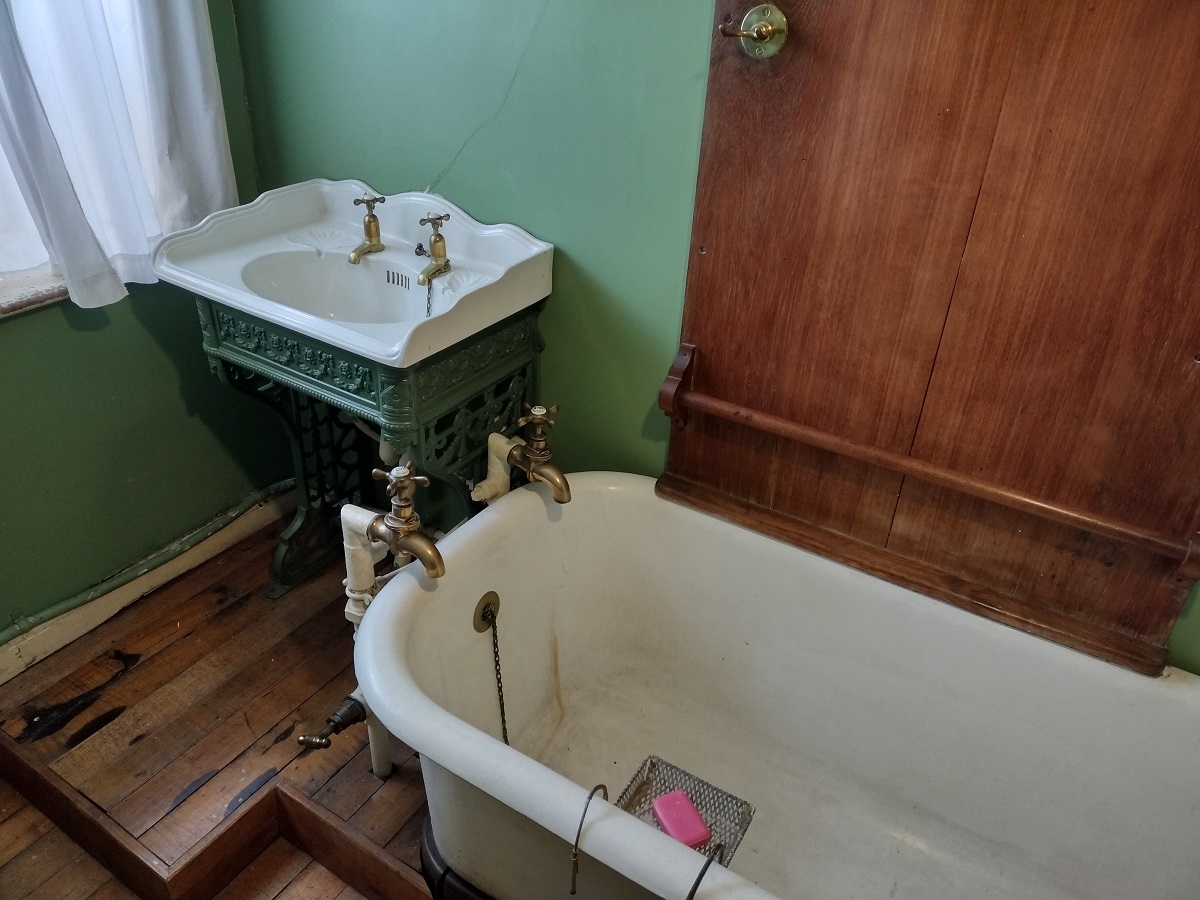Author: Daniel Smith
Directions: Exit the room and walk up the steps in front of you.
Transcript
It’s unusual to have the mistresses’ bathroom so close to servants’ quarters, but this reflects the badly planned layout of the house – which is a natural consequence of having a property that has been built on over the centuries.
Ellen was said to have favoured the colour green, but it was unpopular for walls to be decorated in this colour as by Edwardian times it was well known that the chemicals used in the paint making process were highly toxic.
What appears to be quite an understated bathroom, actually hides many possibilities as to what typically happened here — and bathing wasn’t always top of the list!
In a 1925 inventory, the bathroom was said to have contained an egg timer and a magnifying glass. This ties in with Ellen’s passion for photography so it’s very possible that she used her bathroom as a dark room to process her pictures. The shutters on the window would have made it a perfect room to do this.
This room contains a deep bath tub, with an oak panel above housing a towel rail, glass holder, soap dish and hooks. There is also a brass heated towel rail on the wall, a wash stand and a lavatory.
Remember this was a time when most homes in Britain didn’t have a bathroom and most families would have bathed in other rooms in the house. So this room would have been relatively modern in concept and would have been quite comfortable.
It’s said that Ellen preferred to wash the old fashioned way, using her washstands in the bedroom as well as hip baths in front of the fire — but this doesn’t discount her use of the bath in this room. By Edwardian standards Ellen would have taken her bath at different temperatures according to the state of her health, and would have washed her hair every three to four weeks, using oils and lotions to keep it fresh in-between.
I think what makes this an interesting room, is that while it lacks the splendid designs of late Victorian plumbing that would have been available, it has stamps of Ellen’s personal taste and character. It’s clear to see that there’s a huge difference in grandeur between this room and the rooms used for entertaining downstairs. Do you think this is because there is no need for grandeur in the rooms that guests would not see? Or do you think it’s possible that Ellen’s private taste was actually quite modest?

